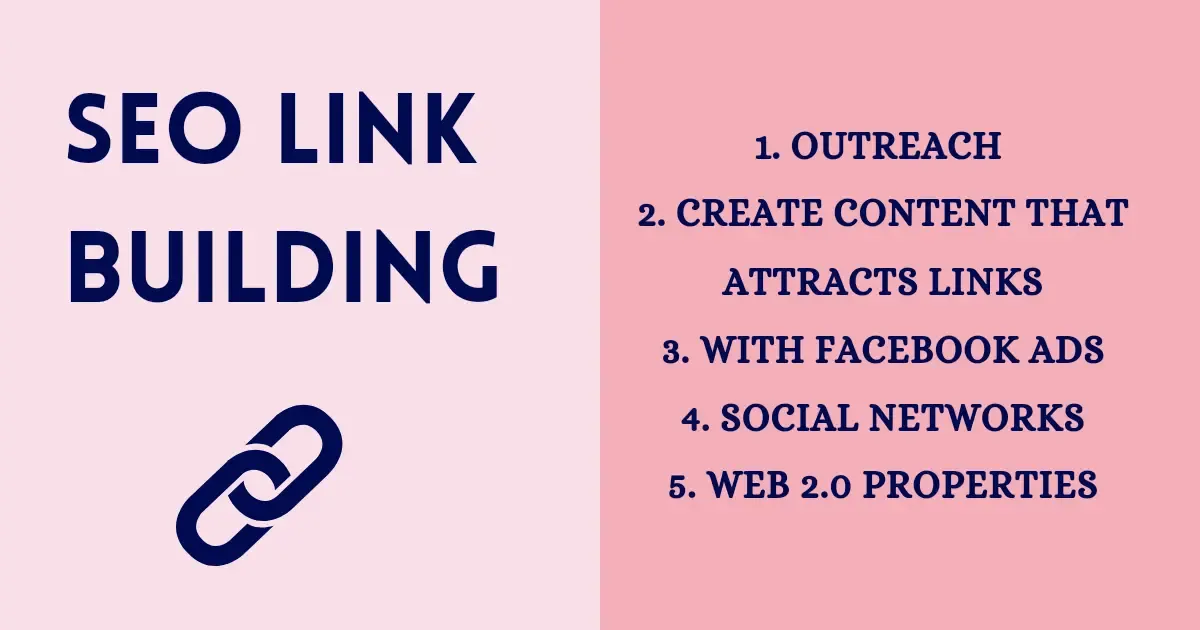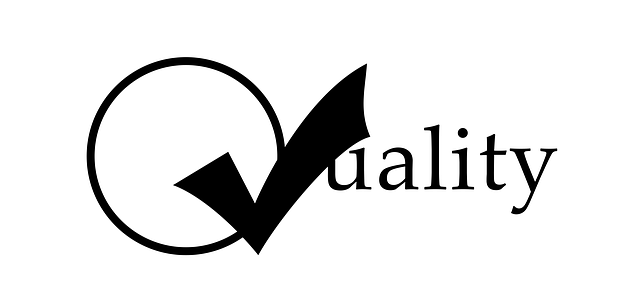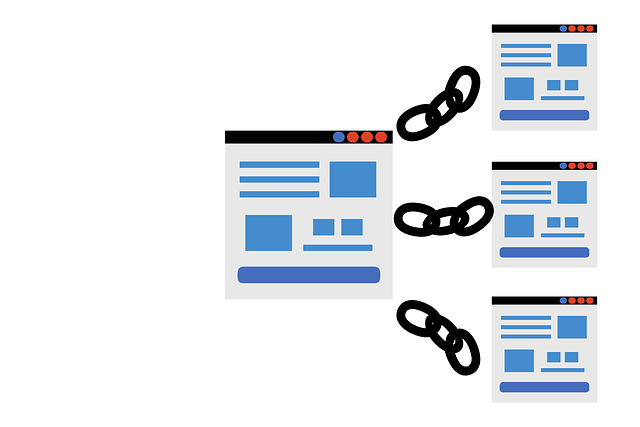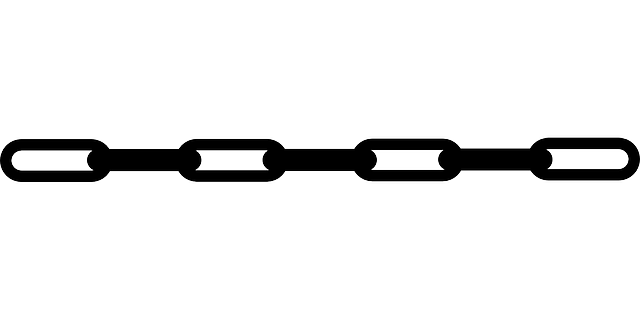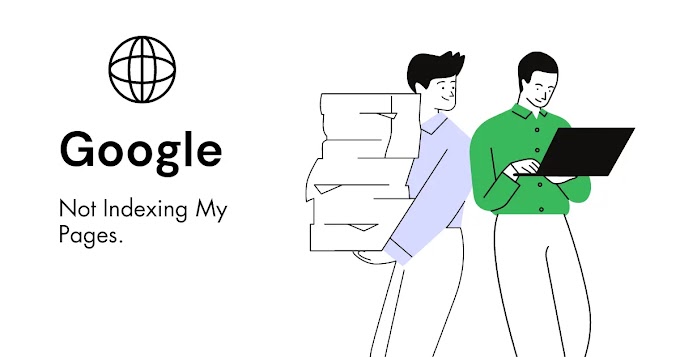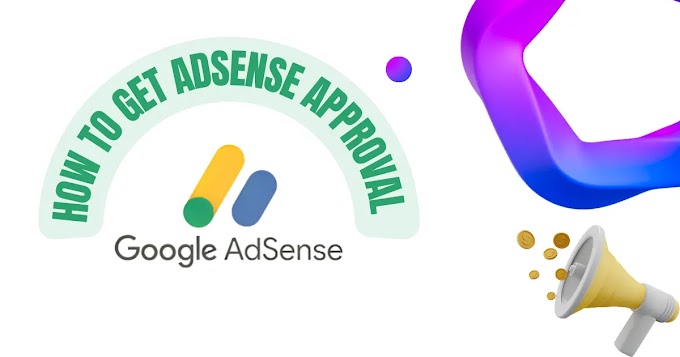It's no secret that in the past, doing SEO basically meant getting backlinks to your site, and it has been like this for several years.
Over time, Google's algorithms have changed a lot, and SEO Specialists have also focused on on-page factors, loading speed, user experience, readability of pages, and much more.
Today, as in the past, it is still possible to obtain the first position without any backlink, but many variables come into play, first and foremost, the competitiveness of the market niche.
Despite all the changes in recent years, Off-Page SEO, i.e., links and everything external to the site, still plays a decisive role in determining the visibility of a site in Google's SERPs.
Precisely for this reason, at present, being able to obtain links to our site is certainly an important job to improve ranking on Google, especially in particularly competitive sectors.
So, let's start from the basics to better understand the complex world of Link Building.
What Is Link Building?
Once upon a time, Google's algorithm was simpler, and good backlinks were a guarantee for ranking your website and increasing the number of visits.
Today, the situation is more complex. SEO ranking factors have multiplied, and it takes more skill to obtain the desired results.
The good news is that if the link building work is done properly, concrete and evident results are achieved.
The question is: What is the best way to do link building and get quality backlinks to our site?
When we find ourselves planning an SEO strategy to position a web project, link building appears to be a complex issue, and we ask ourselves a million questions on the topic. This post was created to answer these questions by indicating a series of practical tips for link building and obtaining results.
With the arrival of Panda, and especially Penguin in 2012, the most "incisive" updates to the Google algorithm, many in the industry began to ask whether it was possible to do good SEO only by generating quality and valuable content, ignoring the links.
The answer is: it depends!
It is possible, but only in some cases or scenarios. If the niche in which we want to rank ourselves has some competition, it will be almost impossible to reach the top positions in the SERP of search results only with quality content.
Furthermore, this would be a paradox that disproves the thesis: if a piece of content is of quality and gives value to users, why doesn't anyone link to it?
How To Prepare To Get Backlinks:
Before you start getting backlinks to your site, it is essential to make sure you are ready. But let's see exactly how.
One of the most common errors on beginner sites is the absence of redirects between the various versions of the site.
For example, by visiting http://example.com, you are not automatically sent to https://www.example.com because an adequate 301 redirect has not been set up.
From a link-building perspective, without this measure, your site could receive some natural backlinks towards a URL and others towards the same URL without "www" or without "https," resulting in two different addresses in practice.
This situation, in addition to dispersing link juice (the value passed from the link to the destination page), also gives rise to issues of duplicate content, which must be completely avoided.
The second issue to pay attention to before starting any link acquisition campaign is to verify that you are using "canonicalization" on all pages of the site. This helps ensure that link juice is properly assigned to the correct URL in case of any duplicate content.
To ensure that you have only one correct and official version of specific content on the site, simply insert the following line in the HTML section:
<link rel="canonical" href="https://www.example.com/page.html" />
Link Building vs Link Earning
It amazes me how even today many bloggers and marketers can entrust their link building strategy solely to paid links. They contact a website, agree on a price for a post with a link inside, and that's it.
Buying backlinks is not absolutely wrong; the point is that Google is increasingly skilled at discovering artificial links. If you don't proceed with caution, you risk incurring penalties that can endanger the future of your site.
This is why, if you have read around the web, you have surely found a certain insistence on the concept of 'natural link building,' which is considered better because it involves the acquisition of free, organic backlinks!
The principle is that links must be "deserved" as a result of the production of valuable content, the underlying principle of Link Earning!
On the other hand, however, every link-building strategy is artificial precisely because it is a strategy (which is therefore planned around the table and implemented artificially).
The truth lies in the middle.
A good SEO strategy involves doing link building by creating value (therefore naturally) to obtain links from other websites, even in an "artificial" way.
Before seeing how to do it in practice, let's look in detail at some fundamental concepts related to Link Building.
SEO Link Building quantity Or Quality?
"How many backlinks do I need to get?"
This is one of the most common and frequent questions for those approaching Link Building.
Relying on quantity from the beginning of your strategy is a mistake.
If the site is new, the creation of these links must be slow and as natural as possible so that Google does not perceive it as artificial link building(not natural).
It is also essential to know that many of the SEO link-building techniques no longer work like they used to.
So, set aside directories, forum comments, etc., and focus on quality rather than solely on quantity.
So let's see what the main concepts are that we need to know to get the most out of our link-building strategy.
Quality backlinks and toxic backlinks.
We have already understood how backlinks are real references for your website. They are fundamental elements for increasing your reputation and reliability in the eyes of the search engine.
This is why it is absolutely vital that they are quality backlinks that bring you value; otherwise, they can really be detrimental to the ranking of your site.
It's the authority of your website that we're talking about, so you should give backlinks due importance because they are essential for SEO.
You must therefore distinguish between:
• Quality backlinks
• Toxic backlinks
Many people think that the more incoming backlinks you have, the better your ranking will improve. Actually, in addition to the quantity, Google notices and rewards the quality of backlinks. You must, therefore, make sure that all the sites linking to yours are authoritative, relevant, and of quality.
We must learn to say NO, occasionally eliminating backlinks that are not of value.
How to do a backlink analysis and remove toxic backlinks?
Several tools integrated into SeoZoom or SemRush have a Backlink Audit tool, which will help you understand which backlinks to keep and which not. Using these tools, you will be able to create a file with the links to remove, and then go to this Google page.
Here, you will have to select the property and upload the file (downloaded from Sem Rush or Seo Zoom) with the links to be removed. This command will be processed by Google, which will handle the request within a few days.
However, if you want to obtain quality backlinks, you have to think about creating the conditions like this:
• Create networks with the community similar to your niche and socialize with the gurus of your sector.
• Look for a perfect domain that contains keywords relevant to your field. Not too long obviously, but capable of attracting links naturally.
• Make your website a point of reference for the sector, add downloadable and valuable content such as podcasts, infographics, guides, ebooks, reports, analyses, video tutorials, etc.
• Always stay on top of the news in your sector, interview the experts, in order to make your site truly authoritative.
Even if it may not seem like a priority, the backlink issue is absolutely worth taking into consideration, being a fundamental part of all those operations that allow you to move up the SERP.
Dofollow, Nofollow, Sponsored Links
In this section, we focus on the different types of links that can be typically used on our site or blog. We distinguish:
Dofollow links: These are links that allow link juice to pass from one website to another organically, using anchor text within a page.
The secret is to use very natural anchor text, like:
"Check the outcome of my campaign in the Facebook Ads guide."
In this case, "guide to Facebook Ads" will act as a natural link to an article from another blog. If the primary article has readers and views, it would transfer value or juice to the linked site/article. This is one of the basics of guest blogging: linking other sites to content published on portals or blogs with a different following.
Nofollow links, introduced in 2005, were initially designed to prevent the passing of PageRank to the linked page. They do not block indexing, but rather, with recent updates, nofollow links can be seen as a way to provide Google with guidance on how to crawl, index, or rank a particular site.
There are different types of nofollow links you can use.
• rel="ugc" are User-generated content, such as forum posts or blog comments.
• rel="nofollow": used when you want to create a link to another page but not convey value and authority to it (which happens with dofollow).
A slightly different discussion is to be made for sponsored links, to be used for sponsored and paid links.
Some agencies misuse these links. In fact, authors pay to put links on content, but without using the rel="sponsored" attribute.
Google recommends using the sponsored attribute for sponsored and paid links to maintain transparency and comply with their guidelines.
Ultimately, therefore, it is good to remember that an outgoing link on your site is always a backlink to another site, something that makes the difference when it comes to link building. Therefore, both when the link is follow and when it is nofollow, we must be careful to whom we transfer the value and authority of our site.
Anchor Text Optimization
Speaking of follow and nofollow links, we cannot fail to talk about anchor texts, i.e., the anchor texts on which the user clicks to access the link. Making a selection of the best ones to use to link to the sites or pages that interest you can really make the difference from an SEO perspective.
Our advice is to optimize anchor texts naturally, without overdoing it, as forcing them can be counterproductive for your website. So, be careful.
The anchor text is the visible part of a link; it's the word that refers to the hyperlink, leading to the corresponding website. It's an element of the frontend of your site or blog, typically appearing in blue and underlined, which directs users to another web page.
A good anchor text should offer as much relevant information as possible about the link it points to. Therefore, it's crucial to ensure its effectiveness through the following methods:
Anchor to the Title Tag: This means the anchor closely matches the title of the web page it links to. This is particularly useful in blogs when you want to link to another piece of content.
Anchoring on Primary Keywords: Here, the anchor consists of the main keyword and serves as an important signal, especially for Google.
Natural anchoring: which occurs during the speech in which the content ends. They are the classic context words like here, on the blog, in the article etc... All words that refer to specific pages and sites and increase the cleanliness of websites in terms of organic and natural links, which Google likes
• Anchoring to the URL, directly uses the web address to which the anchor refers. Quite frequent as a practice.
• Brand-type anchoring, in which either the actual domain name or the brand name is used, again in a natural way. Very useful for increasing trust and authority of a brand or website.
How To Do Link Building ?
We have arrived at the most awaited moment: how is link building done?
Let's get into action.
Let's examine in detail 5 link building techniques that you can use right away to boost your SEO strategy and try to improve the ranking of your site to get more traffic.
1. Link building through outreach: Why is it so hated?
The main method for link building, and probably one of the oldest, is certainly "outreach." It involves contacting other webmasters to request the insertion of a backlink to our site, perhaps by proposing the creation of a tailored Guest Post.
This is one of the most disliked and avoided situations by beginners, even though it can yield great results when the method is applied correctly.
The first reason for discouragement is certainly the frustration of not receiving any response, perhaps remaining on hold for days or even weeks with the hope that the other party is simply busy.
However, if we're lucky enough to be taken into consideration, there is always the fear of rejection, and in this case, it is justified.
Thirdly, this type of link-building strategy requires time both for the identification of the target sites and for the discussion with the other party on the terms of the agreement. Don't forget the wait to verify that the link has been inserted on the site.
This means that outreach is certainly not an immediate or fast method. On the other hand, if done correctly, it can provide significant advantages in terms of high-quality, contextual links related to the topic of your site.
In my experience, the reasons that generally cause bad results in an outreach campaign are related to the attempt to automate the process.
If we think about how we interact with our email inbox every day, we can notice the fact that we immediately trash many emails just because they are not personalized in the slightest and simply seem like SPAM to us. So, don't spam.
To add a touch of greater interest, it would be enough to use an eye-catching subject and insert the recipient's name in the body of the message. Attention to the content of the message is crucial because it must provide a genuine reason for the recipient to be interested in our proposal.
This individual will decide to publish a link or someone else's content only if they genuinely believe that our content or link could be of great use to their readers.
Instead, let's take a look at an example of a winning proposal that stands a good chance of being considered by the recipient.
In this example, it is clear that this is not an automatic message, and there is a genuine interest in collaboration, with mutual benefits: a backlink for the sender and useful content for the recipient's readers.
2. Create great content that attracts links.
This principle is the basis of the concept of Link Earning.
After all, what will motivate another person to give you a link if not quality?
Your content, nothing else.
It is said that "Content is King."
This is true, but it could be corrected to: "Creativity is King."
You can have great content, but if you focus on the same topics and angle as other blogs, what will set you apart?
Why would someone put a backlink to your site and not another?
In marketing, this is known as USP, Unique Selling Proposition. Just make sure your site offers something that others don't.
If you don't know how to get started, here is a beginner-friendly guide on writing high-quality SEO articles.
To make your life easier, here are some examples to start with:
• Infographics
Infographics are a visual representation of data and generally deal with statistics or checklists that create an immediate impact on the reader.
The fact that these contents are images makes them easily shareable on social networks, potentially managing to create a viral effect.
Most users place the link below the infographic, automating the process when someone embeds it in a blog post. This type of link is not ideal in Google's eyes.
It's fine when the connection is spontaneous, but to obtain a quality backlink in this case, you can do better.
• Texts with relevant animated GIFs
Recently, the use of animated GIFs to present short sequences of operations has become increasingly fashionable, especially in the technological world. For example, you can create an animation to show how a car engine or breathing in the human body works.
These are such particular and impactful contents that they are highly appreciated by the public who, out of enthusiasm, decide to share them with their acquaintances.
• Guides of over 2000 words
It's no secret that in-depth guides contain so much information that they are useful to anyone who is doing research to solve a problem or fully understand a complex topic.
Precisely for this reason, articles of over 2000 words are presented as valuable resources for the public to address their learning needs, and they tend to be shared more easily than classic posts.
Case Studies and Research with Numbers and Objective Data
The last type of content that appears to be at the top of the public's preferences is the 'case study' or any content that reports data and statistics.
These articles become valuable sources for further insights from journalists or bloggers in the same sector. One of the fundamental rules in this field is the citation of the origin of the data.
Take advantage of the principle of reciprocity: link to other blogs.
This is one of the techniques for getting links that almost no one uses.
Why is it effective?
There are few bloggers these days who don't constantly monitor their website analytics program (almost always Google Analytics). If they see traffic coming in from a new site, they are very likely to go and see what it is.
This is where the quality content you created comes into play. If they perceive your content positively when bloggers visit your site, they will not hesitate to link to you in the future or at least leave a comment, a sign that you might receive something in the future.
Essentially, it's the tendency for people to feel "indebted" to someone who has done something for them.
• Conduct an interview
Do you know influential people in your industry? You can propose a collaboration through an interview.
There are several ways to do this, but the most common (and simple) is contact via email or through a social network.
Ask them if they are interested, and if they accept, send the list of questions (try not to ask more than 5 or you risk being boring).
After receiving the responses, organize them into an article and send it to the interviewee to let them know that the content is online.
It is almost certain that they will share your new article, and there is a good chance that they will link to some of their posts.
There are two very important things with which you can exponentially increase the probability of getting backlinks through an interview:
1. The type of questions you ask. Quality is more important than quantity, so much so that even from a single question, you can create excellent articles and get many incoming links.
2. The people you interview. The more competent they are and offer value, the more links and visits will be.
3. Network with other bloggers in your niche
This technique is very useful and easy to do. The idea is to connect with other bloggers who cover a similar topic to yours but who are not your direct competitors.
For example, if your blog specifically talks about smartphones, you could contact other bloggers who deal with tablets and PCs. Or, if your blog theme is "how to master WordPress," you could reach out to SEO and affiliate bloggers.
The aim is to create a network in which to give and receive quality backlinks useful for our project. Contact as many bloggers as possible to create a network of at least 10 people, define the type of relationship (number of links, type, implementation method, etc.) and start leveraging these relationships to create intelligent links.
It is important to keep two-things in mind:
• The blogs must not deal with the same topic but be complementary. Otherwise, there would be a conflict of interest that makes the insertion of backlinks impossible.
• This is not a link exchange. If the logic "you give a link to me, I'll give one to you" is put into practice, the effect of both links is canceled out.
3. Link Building with Facebook Ads
This way of obtaining backlinks is not very common, but if used correctly, it can bring great results. The idea is to use Facebook Ads to show your valuable content to the "right people."
To do link building with Facebook ads, we take advantage of the possibility of precisely targeting the ad audience. Depending on your industry, you need to try to reach the "right people" by selecting them based on their workplace.
For example, you can use Facebook ads to target journalists and get a backlink from one of their articles. If your project is in the technology field, you can refer to online magazines like "Techcrunch" or "Wired". If you are in the fashion field, you can refer to magazines with a similar readership.
The important thing is to correctly select the audience for the adverts.
4. Social networks
One of the most underestimated, but still effective, methods is the use of properties that we already have or that we can build ad hoc.
In particular, it is now essential to have accounts in the name of our brand on a social network like Twitter (now X), and in most cases, the possibility of inserting a direct link is offered, even if it is nofollow.
To give some examples, you can create accounts by placing the link to your site on:
• Facebook page
Unfortunately, this method is not very widespread, or in any case, it does not produce results because we often stop at the creation of the profile, which is then abandoned.
On the contrary, with constant use, interactions, and the growth of followers, it is possible to obtain an authoritative account in your market niche within a few months, increasing the value of the link we had inserted some time before and providing advantages to our site, especially from a trust perspective.
5. Web 2.0 properties
Another very underestimated possibility is the use of so-called Web 2.0 properties, i.e., those free platforms that allow you to start a blog using a subdomain of a strong brand.
Here's a short list:
• WordPress.com
• Tumblr.com
• Blogspot.com
• Medium.com
Obviously, it is not advisable to create dozens of blogs just to insert links. Doing so not only risks being considered Black Hat SEO, but also wastes efforts and interest in periodic updating.
Instead, it is possible to focus on one or two properties at most, periodically publishing relevant articles with a link back to your main site.
Even in this case, you must not abandon these blogs but try to update them periodically and, above all, interact with comments or through any other means that can help gain attention. This will increase their authority and, consequently, the link juice passed to our main site.
Conclusions
Well, now all you have to do is put these tips into practice and start doing your link-building strategy!
The ideal is to alternate the different ways to obtain incoming links in order to make everything as natural as possible.
Remember that this is not enough. SEO optimization of a website or page requires several practices, which, together with link building, will allow you to rank your website where you want.
The process may be long, especially for keywords with high levels of competition, but there is no other way to implement an effective SEO strategy than link building.

